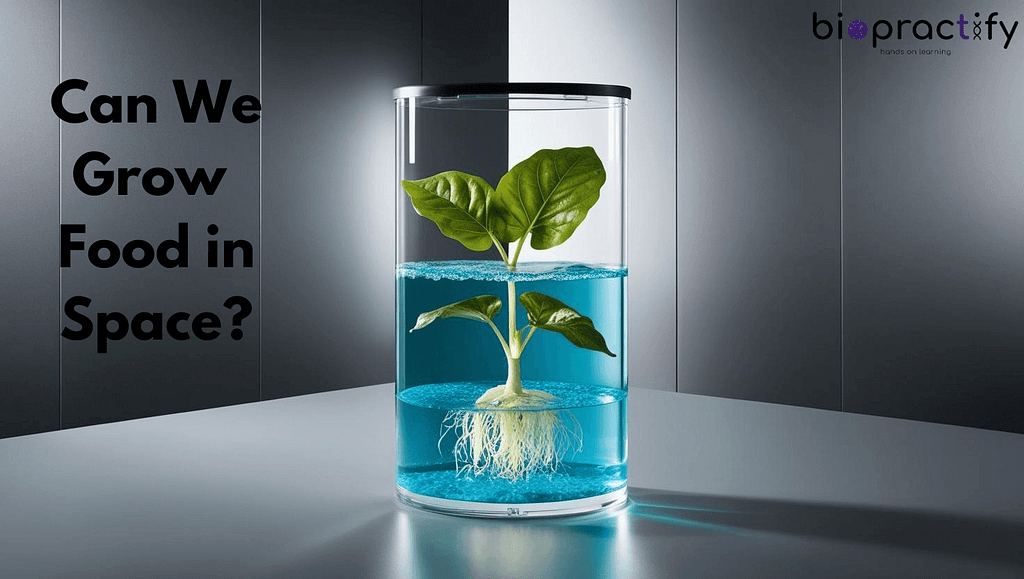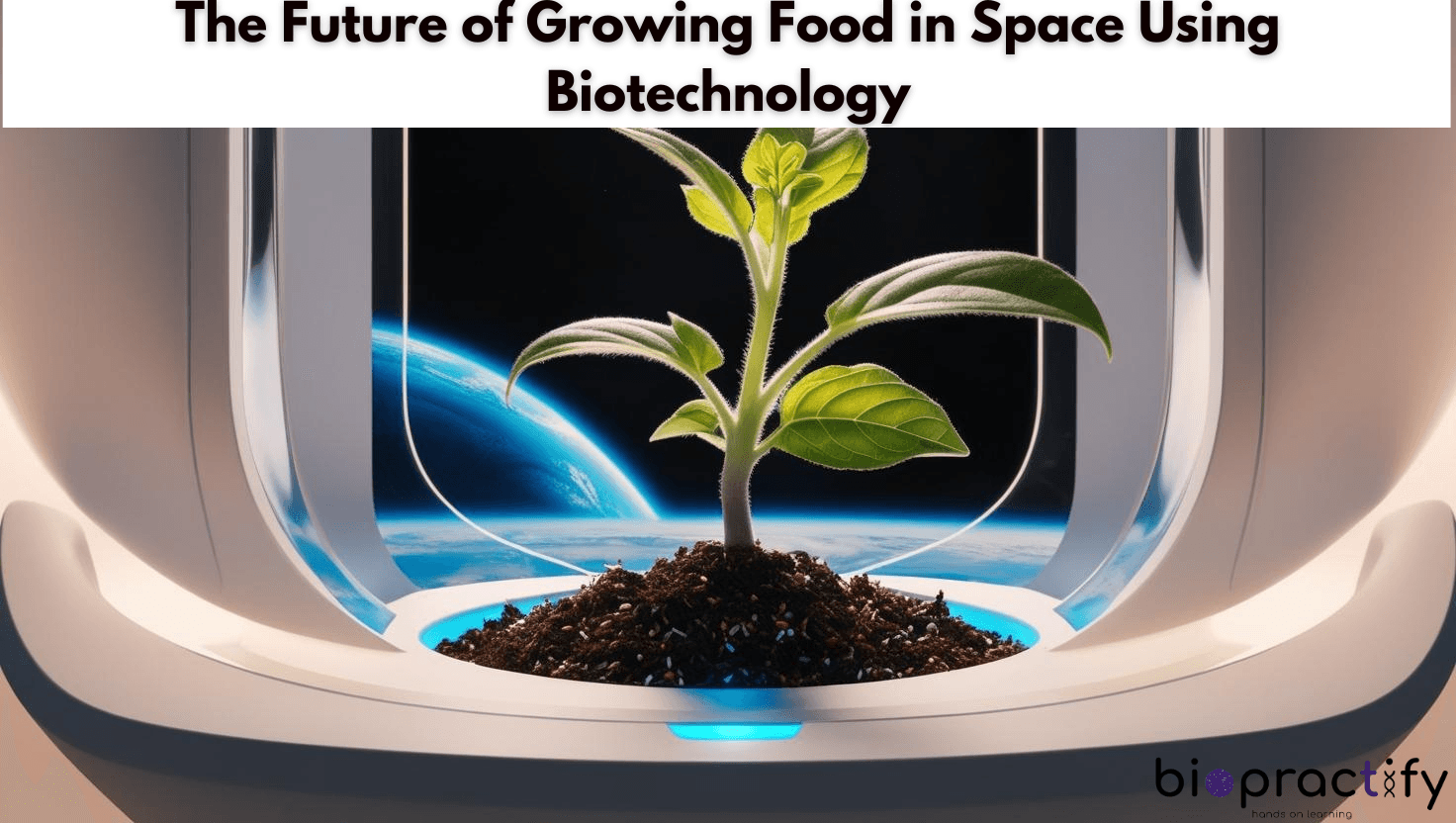Introduction: Can We Grow Food in Space?
As humans plan to explore Mars and beyond, one big challenge is growing food in space using biotechnology. Astronauts cannot carry unlimited food on long space missions, so scientists are finding new ways to grow fresh food beyond Earth. With the help of biotechnology, future space travelers may be able to grow their own fruits, vegetables, and even protein in space. Let’s explore how this technology is shaping the future of space farming.

Why Do We Need Space Farming?
Astronauts on the International Space Station (ISS) rely on food sent from Earth. However, for longer missions to Mars or deep space, this is not practical. Food shipments take time, and storage is limited. Space farming with biotechnology offers a solution to the problem growing food in space using biotechnology by allowing astronauts to grow food on their spacecraft or other planets. This can help in:
- Providing fresh, nutritious food
- Reducing dependence on Earth
- Making long-term space missions possible
How Biotechnology Helps Grow Food in Space
1. Genetically Modified (GM) Crops for Space
Scientists are developing genetically modified crops for space farming. These crops are designed to grow faster, need less water, and survive in microgravity. Some plants can even produce more vitamins, helping astronauts stay healthy.
2. Hydroponic and Aeroponic Systems
Instead of soil, astronauts use hydroponic and aeroponic farming methods to grow plants. In hydroponics, plants grow in nutrient-rich water. In aeroponics, plant roots hang in the air and get sprayed with water and nutrients. These methods help save space and reduce the amount of water needed.
3. Using Microbes to Boost Plant Growth
Space scientists are also testing biotechnology for improving plant growth in space by using beneficial microbes. These tiny organisms help plants absorb nutrients and grow better in challenging environments.
4. Lab-Grown Meat for Astronauts
Another breakthrough in biotechnology for space food production is lab-grown meat. Instead of raising animals, scientists use animal cells to create meat in a lab. This method requires fewer resources and provides astronauts with protein-rich food without needing livestock.
Challenges of Growing Food in Space
Even with biotechnology, growing food in space is not easy. Some challenges include:
- Microgravity: Without gravity, water and nutrients move differently, making it harder for plants to grow.
- Radiation: High radiation levels in space can damage plants.
- Limited Space: Spacecraft have small areas for farming, so scientists must maximize growth in tiny spaces.
The Future of Space Farming
With advancements in biotechnology for sustainable food in space, future space missions may rely completely on space-grown food. Some exciting possibilities include:
- 3D-Printed Food: Scientists are developing 3D food printers that can create meals using space-grown ingredients.
- Self-Sustaining Space Habitats: In the future, astronauts may live in space stations or Mars colonies with their own farms.
- AI-Powered Farming: Smart technology could help monitor plant growth and adjust conditions for better results.
Conclusion: A New Era of Space Food
The future of growing food in space using biotechnology is promising. As technology improves, astronauts may soon have fresh, homegrown meals on Mars and beyond. This innovation will not only help in space exploration but also improve farming on Earth, especially in extreme environments. With biotechnology, the dream of a self-sustaining space colony is getting closer to reality!
- Learn about CRISPR gene editing and its potential.
- Read more on DIY Biology and its global impact.
- Explore other biotech innovations on our blog here.


Leave a Reply